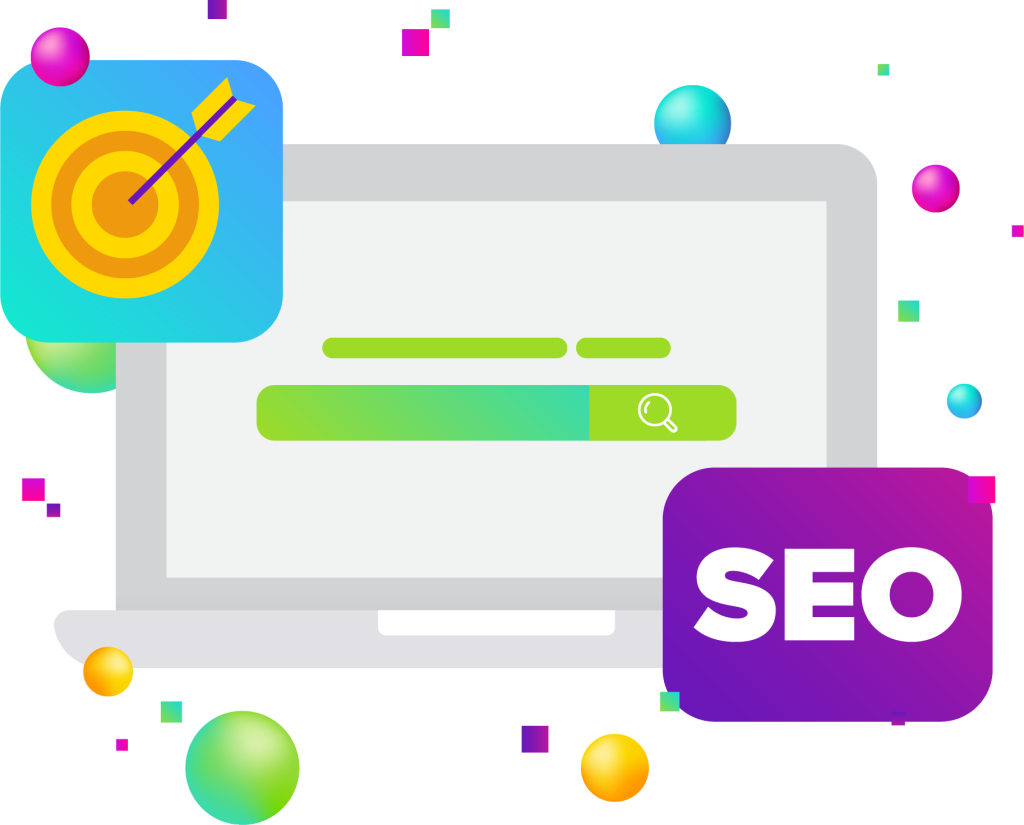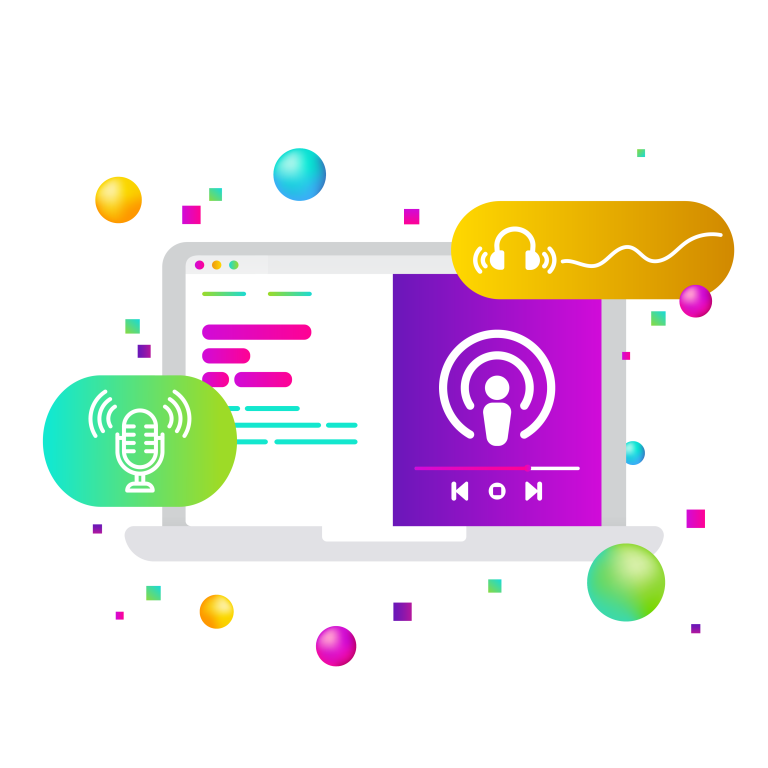
Mastering SEO is crucial for anyone running a WordPress website. This article delves into advanced SEO strategies that are designed to elevate your online presence and drive more organic traffic. We’ll explore five advanced SEO strategies that can significantly improve your website’s search engine ranking.
Strategy 1: Enhanced Keyword Research for Audience and Competition Insights
Initiating your SEO efforts with enhanced keyword research is fundamental. This strategy goes beyond merely identifying what potential customers are typing into search engines—it’s about delving into the intent behind their searches and mapping their journey from awareness to conversion. In the ever-evolving world of SEO, expanding your toolkit is essential for staying ahead.
SEMrush and Ahrefs
Two of the best tools for this purpose are SEMrush and Ahrefs. These platforms offer a comprehensive suite of features that go beyond simple search volume analytics. They provide an in-depth analysis of keyword difficulty, which is crucial for understanding how hard it might be to rank for specific keywords.
For a comprehensive understanding, engage in competitor analysis to uncover the terms they’re ranking for, and identify gaps in their strategies that you could exploit. Look for patterns in their keyword clusters to inspire your content plan.
Long-Tail Keywords
Moreover, broaden your scope by integrating long-tail keywords—these are often more specific, less competitive, and attract more qualified traffic. For example, instead of targeting “running shoes,” aim for “women’s trail running shoes for overpronation.” This precision helps you capture a more targeted audience ready to engage or purchase.
Additionally, consider user questions and conversational phrases that align with voice search trends and question-based queries. Use tools like “Answer the Public” to explore the questions your audience is asking and craft content that provides solutions.
By following this enhanced approach for advanced SEO strategies, you can effectively resonate with your audience and outpace your competition.
Strategy 2: Advanced Optimization of WordPress Site Architecture for Improved SEO and User Experience
A strategic, well-planned site structure is not just beneficial for SEO, but it’s also crucial for providing an excellent user experience. A logically organized WordPress site, marked by a clear and intuitive hierarchy, allows users to navigate effortlessly and search engines to index your content more effectively.
Start by envisioning your website as a tree with branches representing different sections of your site. Your homepage sits at the root, with main categories or sections as the primary branches. Subcategories and individual posts or pages serve as the smaller branches and leaves. This hierarchical approach is visually represented in your site’s navigation and reflected in the URL structure.
Rich and Clean URLs
For instance, ensure that your URLs are not only clean—free from unnecessary parameters and numbers—but also rich with keywords that reflect the content of the page. For example, use /blog/content-marketing-tips instead of /page-id?123. This clarity helps search engines understand the context of your pages.
Categories should be distinct and encompassing, allowing for a broad classification of your content, while tags are more specific, highlighting the micro-topics covered in individual posts. For example, a blog on health might have categories like “Nutrition,” “Exercise,” and “Wellness,” and use tags such as “vitamins” or “meditation techniques.”
Guide Users
Furthermore, prioritize your content by using appropriate header tags (H1 for titles, H2 for main headings, H3 for subheadings, etc.), which guide users and search engines through your content’s structure. Ensure that your navigation menus are logical, not overloaded, and include a breadcrumb trail to help users keep track of their location on your site.
Implementing an XML sitemap and submitting it to search engines can significantly enhance your site’s discoverability. The sitemap acts as a roadmap, directing search engines to all the important pages on your site.
Internal Links
Incorporating internal linking practices is also vital. Links to related content keep users engaged and allow search engines to crawl more deeply into your site. For instance, a blog post about “The Benefits of Yoga” could link to a related post on “Yoga Poses for Beginners” to encourage further reading.
Strategy 3: Advanced SEO Strategies Include Crafting High-Quality, Engaging Content
In the realm of SEO, the adage “content is king” is more than a cliché—it’s a guiding principle. The creation of high-quality, compelling content goes beyond mere keyword inclusion; it involves producing material that provides substantial value and resonates with your audience. To excel in this strategy, focus on the depth, relevance, and originality of the content you publish.
Begin by identifying the core topics that matter to your audience. Use audience analysis tools to discern their interests, pain points, and questions. For example, if you’re in the fitness industry, rather than just writing about “Advanced SEO Strategies,” delve into “5 Cutting-edge SEO Tactics for Fitness Bloggers” to tailor your content to your niche.
Fresh Content
Update your blog or site regularly with well-researched posts that not only inform but also captivate. Incorporating elements such as industry insights, infographics, data-driven analyses, and real-world examples can enhance the richness of your content. For instance, a blog post on “The Impact of AI on SEO” could include case studies, current statistics, and expert commentary.
Originality is paramount. It’s not sufficient to rehash what’s already out there; strive to offer unique perspectives or new insights. For example, instead of another generic post on “How to Rank Higher in Google,” you might explore “The Untapped Potential of Voice Search Optimization for Small Businesses.”
Additionally, consider the format and presentation of your content. Break down complex information into digestible chunks using bullet points or lists. Use subheadings to structure your article and make it easy for readers (and search engines) to follow.
Interactive Content
Interactive content can also significantly boost engagement. Tools like quizzes, polls, and interactive videos invite participation and can lead to higher user investment in your content. For example, a nutrition blog could feature an interactive quiz titled “Discover Your Ideal Diet Plan Based on Your Lifestyle.”
Lastly, leverage storytelling to create a narrative around your content. This can transform a standard piece into a memorable one. For example, instead of just listing benefits of sustainable energy, narrate a success story of a community that thrived after adopting renewable resources.
With these advanced content creation techniques, you can significantly enhance the relevance and appeal of your content, leading to better SEO results and a more engaged audience.
Strategy 4: Enhanced On-Page SEO Tactics for Element Optimization
On-page SEO is a critical component of any successful SEO strategy, encompassing the optimization of various elements on your website to bolster its visibility and ranking on search engines. This goes beyond basic keyword insertion into meta elements; it’s about fine-tuning all content and tags to ensure maximum relevance and user engagement.
When it comes to title tags, they should be compelling and clickable while incorporating primary keywords in a natural way. For instance, instead of a generic title like “Advanced SEO Strategies,” a more engaging title would be “10 Advanced SEO Strategies That Will Skyrocket Your Rankings in 2023.” This title is not only keyword-inclusive but also specific and promises value.
Meta Titles
The significance of meta titles cannot be overstated. These titles serve as a critical element for both search engines and users, acting as concise headlines that appear in search engine results. A well-crafted meta title is essential for attracting user attention and improving click-through rates. It should succinctly summarize the content of a page while integrating targeted keywords in a natural and meaningful way.
This not only aids in ranking for relevant queries but also enhances the overall user experience by providing a clear and accurate preview of the page’s content. In essence, meta titles are a cornerstone of effective SEO strategy, playing a key role in bridging the gap between a website’s content and its potential audience.
Meta Descriptions
Meta descriptions serve as concise summaries that entice readers from the search engine results page. They should provide a clear overview of the page’s content and include a call-to-action, like “Discover the most effective SEO strategies to elevate your website’s performance. Click to learn more!”
Headings
H1 and H2 headings structure your content and should guide the reader through your article. They need to be descriptive and include variations of your main keywords. For example, if your main keyword is “Advanced SEO Strategies,” your H1 could be “Exploring Advanced SEO Strategies for Digital Marketers,” followed by H2s like “Implementing Schema Markup” and “Mastering the Art of Backlink Acquisition.”
URLs
Your URL acts as a foundational element for both user navigation and search engine indexing. It should be clear, concise, and reflective of the page’s content, incorporating relevant keywords to enhance its search engine discoverability. A good URL structure not only makes it easier for search engines to crawl and understand the site’s hierarchy but also improves user experience.
Users are more likely to click on a URL that is readable and descriptive, as it provides a clear indication of the content they can expect on the page. This clarity in structure aids in building trust and increasing the likelihood of engagement. Furthermore, a clean and organized URL structure facilitates better link sharing and can contribute positively to a page’s ranking in search results.
Image Optimization
Image optimization is another cornerstone of on-page SEO. Descriptive, keyword-rich alt tags for images not only make your site more accessible but also provide search engines with contextual information. For example use “Advanced SEO Strategies Infographic”, if on the image is infographic in Advanced SEO Strategies article.
Moreover, optimizing your content for readability is crucial. This means using short paragraphs, bullet points, and multimedia to break up text and keep the user engaged. For example, a section discussing “SEO-Friendly Content Creation” could feature bullet points like “Use engaging hooks,” “Incorporate visual aids,” and “Implement active voice for clarity.”
Lastly, ensure your website is easy to navigate by employing a logical structure, clear categories, and a robust internal linking strategy. For example, link from a general SEO guide to more specific articles like “Local SEO Tactics for Small Businesses” to encourage deeper site exploration.
By implementing these enhanced on-page SEO tactics, you can significantly improve your website’s user experience and search engine ranking, leading to increased traffic and higher engagement.
Strategy 5: Advanced Speed Optimization for SEO and Enhanced User Experience
In today’s fast-paced digital landscape, website speed optimization is not just a boost for SEO, it’s an essential component of the user experience. A swift-loading site retains users, improves engagement rates, and is favored by search engines, which consider page load times as a ranking factor.
Begin by evaluating your website’s current performance with tools like GTmetrix or Google PageSpeed Insights. These tools measure your site’s loading speed and provide actionable insights on how to optimize it. For example, they might suggest enabling browser caching, which stores elements of your site on visitors’ devices, leading to faster load times on subsequent visits.
Image Optimization
Image optimization is another crucial area. Large, unoptimized images can severely slow down your pages. Use compression tools to reduce image file sizes without sacrificing quality. For instance, converting images to formats like WebP often results in smaller file sizes compared to traditional formats like JPEG or PNG.
Additionally, scrutinize your website’s code. Minimize CSS, JavaScript, and HTML by removing unnecessary spaces, comments, and line breaks. Tools such as HTMLMinifier, CSSNano, and UglifyJS can automate this process for you. Moreover, consider using a Content Delivery Network (CDN) to distribute your content globally and reduce latency.
Website Hosting
Consider also the impact of web hosting. Upgrading to a better hosting provider or a higher-tier plan can significantly improve loading times, especially for sites with high traffic. For example, switching from shared hosting to a dedicated server can provide more resources for your website, leading to quicker response times.
To illustrate the benefits of these optimizations, a case study might involve an ecommerce site that reduced its load time from 5 seconds to under 2 seconds, resulting in a 20% increase in sales conversions. Such a case underscores the direct correlation between site speed and business performance.
Finally, regularly monitor your website’s speed post-optimization. User behavior and website content evolve, and what works today might not be as effective tomorrow. Establish a routine to check your site’s performance and tweak as necessary.
Implementing these advanced speed optimization strategies can significantly elevate your website’s user experience and search engine ranking, ultimately contributing to higher user retention and conversion rates.
New Target is an Orange County SEO company and a Washington D.C. SEO company.



